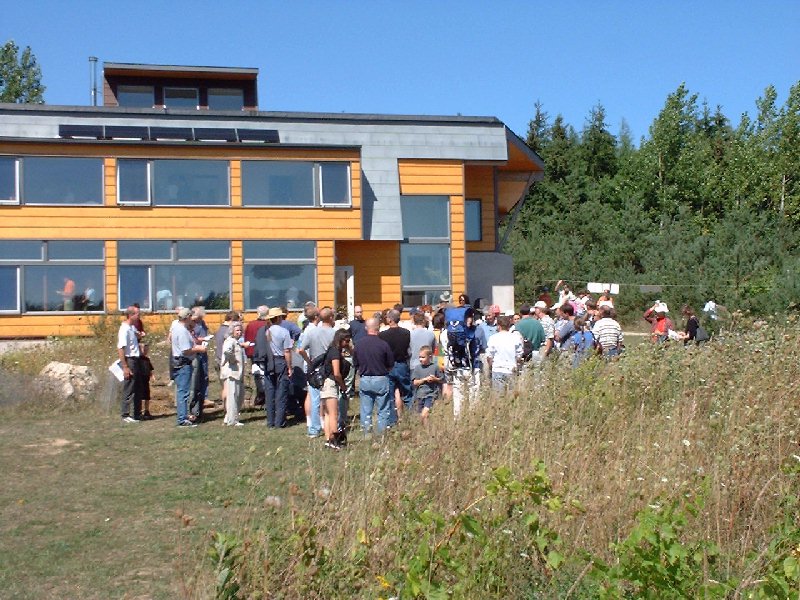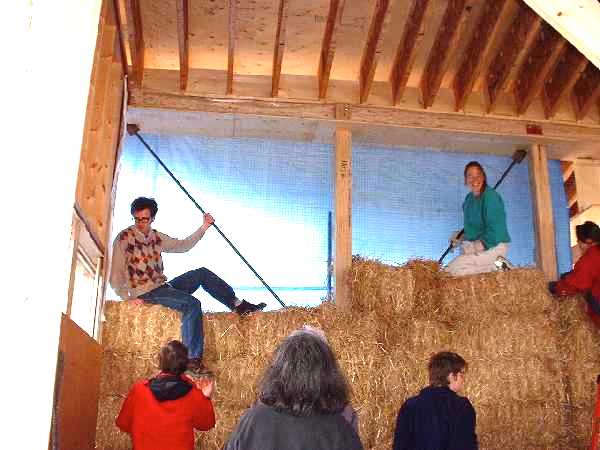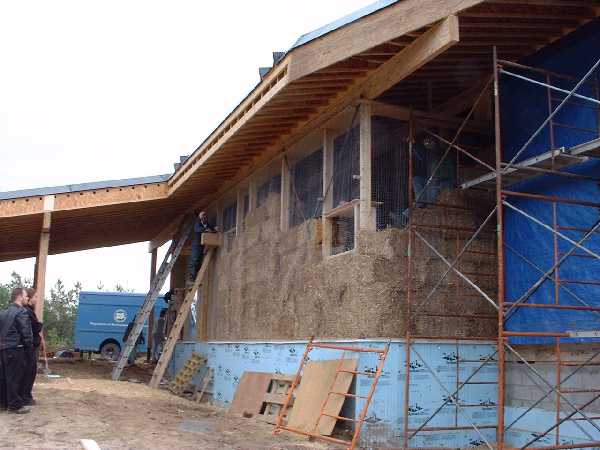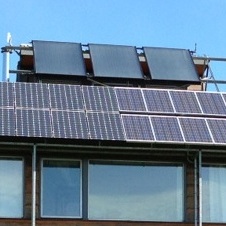
Renewable Energy
Start with passive solar design that requires you face the windows south and provide an awning to prevent over-heating in the summer. Add some solar thermal hot water heating panels for both domestic hot water and home heating requirements. Finally, top it off with an array of solar photovoltaic panels that generate electricity.
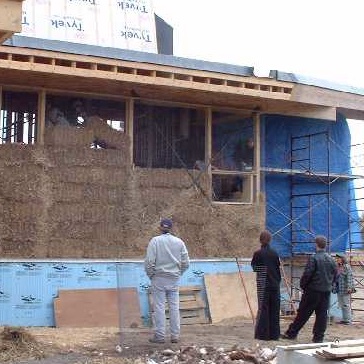
Renewable Materials
Using local materials that are renewable requires looking back into our past and applying old ideas in new ways. Straw bale provides a great way to insulate the walls while enabling healthy living by providing a natural breathing wall system.
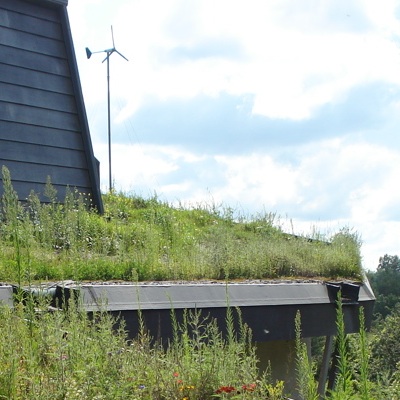
Green Roof
Protecting your house with a green roof has many benefits. The roof will last longer, it will keep the house cooler in the summer and warmer in the winter, and the rain water run-off can be reduced substantially while still being collected. And it looks gorgeous naturally.
Renewable Energy. Solar + Wind.
See a 1 kW wind turbine, 6.2 kW solar photovoltaic system and a large 3 panel solar thermal system. The solar photovoltaic system is on a MicroFIT contract with the Ontario government providing approximately $500/month income. The expected return on investment is approximately 8 years. The house is Bullfrogpowered providing 100% green electricity through the grid for when on-site renewable energy systems are insufficient, primarily in the winter.

Renewable Energy Videos
Straw Bale Video
Green Roof. Beautiful.
Learn how to construct your own green roof using low cost industrial roofing techniques.
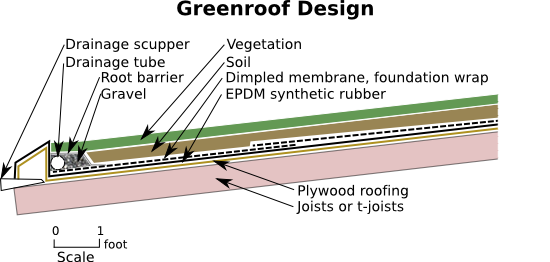
Green Roof Video
Electric Vehicle. Saves Money.
Driving an electric vehicle is a pleasure. Plug it in, charge it up, and save money on your transportation costs. Save time with much less maintenance.
Electric Vehicle Charging
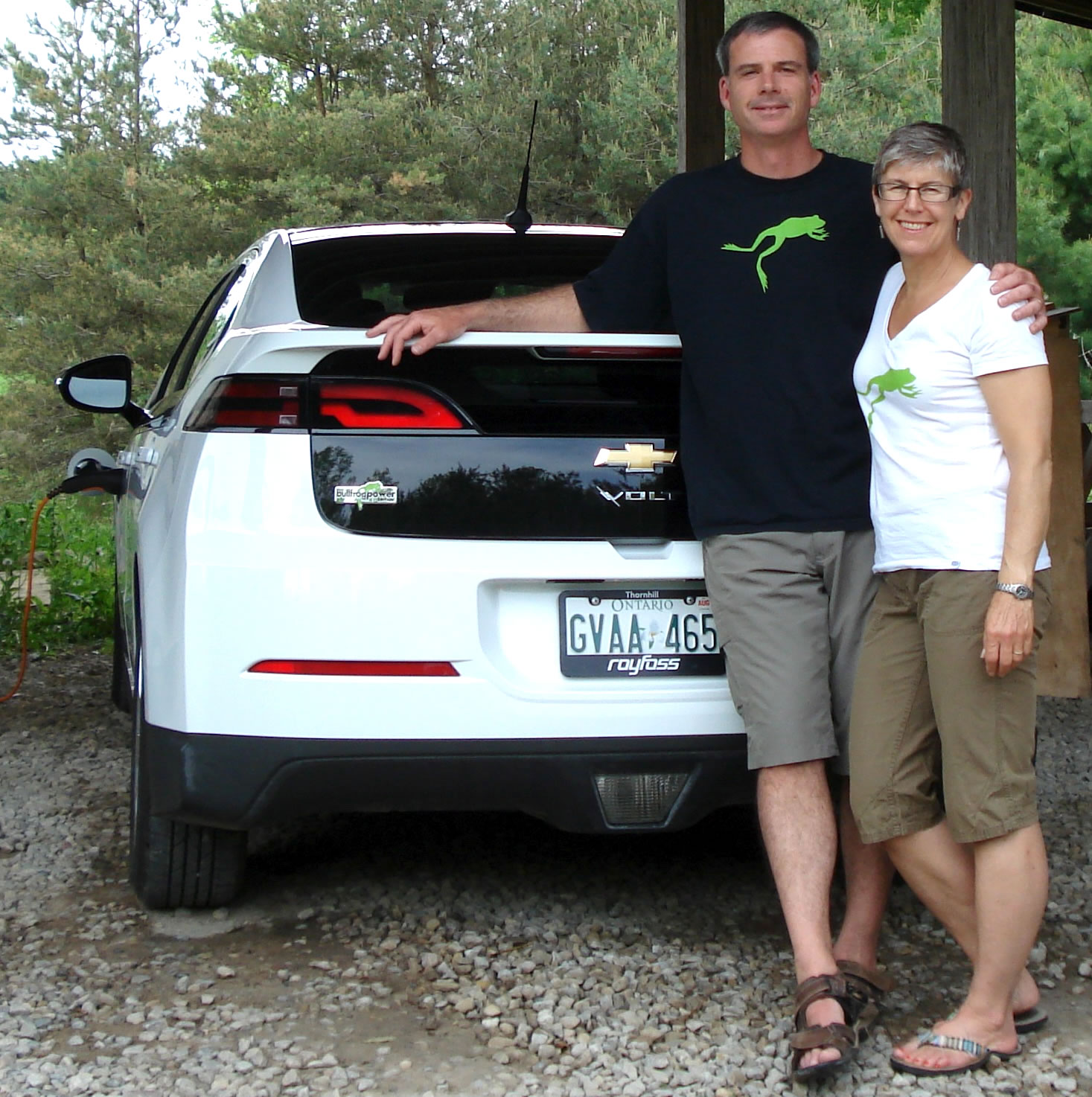
About. John Wilson.
More than a decade ago we set out on a journey to create a home that was sustainable for our children. Part of that plan was to make the house a renewable energy power plant eliminating the need for any non-renewable energy sources. By 2001 we had built our award-winning sustainable natural home using local straw bales for the north wall, a green roofing system we custom designed, and passive solar design.
In 2002 we selected Solera Energies to start building our renewable energy system in the form of a 1 kW Bergey wind turbine and a 400 W Siemens solar PV array in a net meter (running the meter backwards) configuration. Then in 2009 again working with Solera we added a 1.2 kW Sharp solar PV array on the Ontario renewable energy standard offer program (RESOP) for which we were being paid 42 cents/kWh for 20 years.
Next, to further our goal of achieving 100% renewable and in order to turn the house into a power plant (generating more than we consume) we've added an additional 5 kW of Sanyo solar panels that complete the passive cooling awning system that has always been the planned design of the house. 5 kW of the new Sanyo panels and the 1.2 kW Sharp panels are now combined on a MicroFIT (the 1.2 kW RESOP system was grandfathered into the MicroFIT program upon request) contract for 20 years at 80.2 cents/kWh generating about $500/month in income.
Most recently, in 2012, we added a three panel solar thermal hot water heating system. This new solar thermal system provides dual duty, pre-heating our domestic hot water for showers, baths and sinks. In addition, during the winter when the water doesn't always reach warm enough temperatures for domestic purposes, we pump the lower grade heat into the basements concrete flooring using it as a heat storage facility, reducing the demand on our in-floor heating system. Most analysis of solar thermal return on investment suggests that it is about six years making it even more appeal than solar photovoltaic in some ways.
Video
This home costs less to build than a conventional custom built home while saving you thousands every year in eliminated energy bills. The award-winning sustainable design by highly acclaimed eco-architect Martin Liefhebber (featured in the documentary video) proves that form, function, beauty and comfort can work together to save the environment, improve your health and provide a reasonable return on your investment. Learn how in this 25 minute documentary that explains all the major elements of the design including details on how the house was built.
For more information about the documentary and to purchase the DVD click here.
Contact. Book a Tour.
To find out more about organizing a tour for groups of 20+ please contact:
John Wilson
Email: wilsonjd9@gmail.com
Phone: 416-450-2499 (Mono, Ontario, Canada)
Public Tours
